R.J. Stowell's Blog: rjsomeone, page 37
October 17, 2019
By the time we got to Woodstock - A Video Roadtrip
AM is supported solely by the sales of Miles From Nowhere and Jay and the Americans, and does not utilize ads or popups. Click on the link in the sidebar to buy your copy from Amazon or get a personalized copy by contacting AM at rjsomeone@gmail.com. Proceeds go directly to the enhancement of AM. You can also read either novel free as a part of Kindle Direct. Thank you to the 1000s who support the AM Network on the radio, on Facebook and here on AM.
Play them all at once for a sound feast.
Published on October 17, 2019 07:12
October 15, 2019
Miles in California
Read Miles From Nowhere on Kindle Unlimited for FREE or get your copy on Amazon. AM is supported by sales from Miles and from Jay and the Americans. Unlike Patreon, when you offer up your hard-earned cash, you get something in return. Want a hand-signed edition of either novel, send me an email. Enjoy.
Published on October 15, 2019 14:51
October 14, 2019
Long John Who? and Rod Stewart - Maggie May
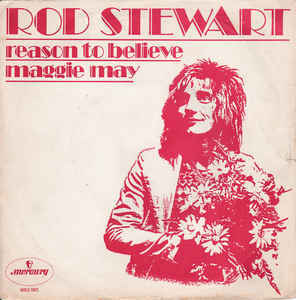 Long John Baldry first heard Rod Stewart playing harmonica at the Twickenham Railway Station in 1963. Oh, never heard of Long John Baldry? Funny thing, seems the writers of the Elton biopic, Rocketman, didn't either. Baldry was Reg Dwight's sideman in the band Bluesology, Elton's band before meeting Bernie Taupin. While hardly known, Baldry played the folk club circuit of the mid-60s with the likes of Dylan and The Rolling Stones. How about this one? Maybe the name Dr. Robotnik rings a bell? The Sonic the Hedgehog character was a voiceover from Baldry. Known for his imposing stature, Baldry is a name we don't know but should.
Long John Baldry first heard Rod Stewart playing harmonica at the Twickenham Railway Station in 1963. Oh, never heard of Long John Baldry? Funny thing, seems the writers of the Elton biopic, Rocketman, didn't either. Baldry was Reg Dwight's sideman in the band Bluesology, Elton's band before meeting Bernie Taupin. While hardly known, Baldry played the folk club circuit of the mid-60s with the likes of Dylan and The Rolling Stones. How about this one? Maybe the name Dr. Robotnik rings a bell? The Sonic the Hedgehog character was a voiceover from Baldry. Known for his imposing stature, Baldry is a name we don't know but should.After Reg left Bluesology, Baldry and Stewart formed Hoochie Coochie Men and then Shotgun Express. Don’t panic, I don't know them either. The point is, Baldry played with the soon to be Elton John and discovered Rod Stewart. Soon after, Stewart became the voice of The Jeff Beck Group with Ronnie Wood. After Beck came a contract with Mercury, Rod's first solo work and his stint with Faces.
"Maggie May" was already in the works at this point, but Rod at the time was more of a crooner than a singer/songwriter, relying on his unusually raspy tenor. Before the release of Rod's third LP, among the greatest recordings of the rock era, Mercury Records released the single "Reason to Believe," a cover of the Tim Hardin song, another relative unknown who wrote "If I were a Carpenter." But here was a case when the public won out over the record label – everyone was listening to the B-side, "Maggie May," the true story of an older woman referred to in the song only as Maggie.
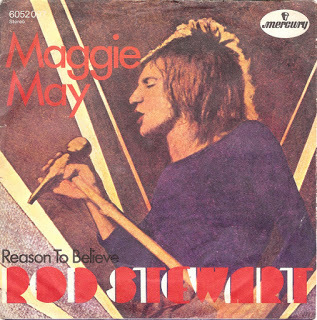 The studio line-up for the track included the partial-Faces gathering of Ian McLagan on organ and Ronnie Wood on electric guitar, bass and 12-string. Micky Waller was on drums and Martin Quittenton on acoustic guitar, while the crucial feature of the song's success, the mandolin, was played by Ray Jackson, lead singer with another band no one's ever heard of, Lindisfarne, a band that has now been around for 52 years.
The studio line-up for the track included the partial-Faces gathering of Ian McLagan on organ and Ronnie Wood on electric guitar, bass and 12-string. Micky Waller was on drums and Martin Quittenton on acoustic guitar, while the crucial feature of the song's success, the mandolin, was played by Ray Jackson, lead singer with another band no one's ever heard of, Lindisfarne, a band that has now been around for 52 years.Stewart first appeared on Top Of The Pops performing "Maggie May" on August 19, 1971. The next day, "Maggie May" was listed as the "top side" of the single. Subsequent pressings switched the A and the B.
By the time Every Picture Tells a Story was released, the "Maggie May" had reached No. 1 in both the U.K. and the U.S. and spent five weeks at the summit.
Published on October 14, 2019 10:02
Small Faces, Faces and Rod Stewart
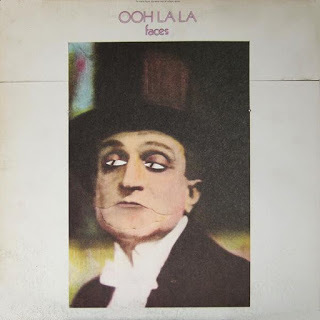 The Small Faces never really made a name for themselves in the U.S., despite their popularity in the U.K. and releasing one of those lost gems, indeed one of the top LPs ever produced in Ogden's Nut Gone Flake, an LP that many compare to Sgt. Pepper. The band had just one psychedelic hit with "Itchycoo Park," but The Small Faces were seemingly too British for the States. The original members included Steve Marriot, who would go on to form Humble Pie with Peter Frampton, Ronnie Lane, Kenney Jones, and Ian McLagan. Steve Marriot would leave the band in 1968 in dramatic fashion, walking off the stage and shouting, "I quit!" The rest of the band would join up with Ron Wood and Rod Stewart and shorten their name to Faces. Stewart would front the band while simultaneously having a successful solo career; his hits with the band assimilating into his own canon.
The Small Faces never really made a name for themselves in the U.S., despite their popularity in the U.K. and releasing one of those lost gems, indeed one of the top LPs ever produced in Ogden's Nut Gone Flake, an LP that many compare to Sgt. Pepper. The band had just one psychedelic hit with "Itchycoo Park," but The Small Faces were seemingly too British for the States. The original members included Steve Marriot, who would go on to form Humble Pie with Peter Frampton, Ronnie Lane, Kenney Jones, and Ian McLagan. Steve Marriot would leave the band in 1968 in dramatic fashion, walking off the stage and shouting, "I quit!" The rest of the band would join up with Ron Wood and Rod Stewart and shorten their name to Faces. Stewart would front the band while simultaneously having a successful solo career; his hits with the band assimilating into his own canon.Faces hits included "Stay With Me," "Cindy Incidentally," and "It's All Over Now."
Rod Stewart's solo career started with the debut in 1969 called The Rod Stewart Album in the U.S., and the more cryptic An Old Raincoat Will Never Let You Down in the U.K. For the LP, Stewart took on the role of song stylist, along the lines of Joe Cocker, with more than half of the LP's tracks the songs of others, including The Rolling Stones' "Street Fighting Man" and the traditional "I Am a Man of Constant Sorrow," which George Clooney sang so soulfully in O Brother, Where Art Thou, channeling Ry Cooder. The follow-up, Gasoline Alley, would do the same, with Stewart penning only three songs. Both were critically acclaimed, though sales were minimal.
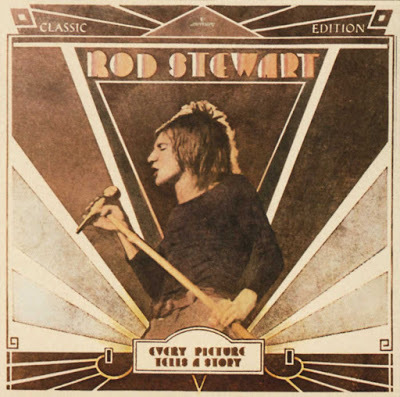 Rod's breakthrough LP, a worldwide smash, was Every Picture Tells a Story, which contains one of my top ten singles "Maggie May." It's an AOR classic, but the majority of songs play like hit singles including, the title track, "That’s All Right," "Reason to Believe" and "Madoline Wind." Maggie May's intro is a lovely guitar solo called "Henry." The LP ranks No. 172 of Billboard's Top 500 LPs. Its odd perforated cover makes a mint copy a rarity.
Rod's breakthrough LP, a worldwide smash, was Every Picture Tells a Story, which contains one of my top ten singles "Maggie May." It's an AOR classic, but the majority of songs play like hit singles including, the title track, "That’s All Right," "Reason to Believe" and "Madoline Wind." Maggie May's intro is a lovely guitar solo called "Henry." The LP ranks No. 172 of Billboard's Top 500 LPs. Its odd perforated cover makes a mint copy a rarity.Stewart would go on to be a superstar in the late 70s and 80s with hits like "Forever Young," "Do You Think I’m Sexy," "Sailin'," "Tonight’s the Night," and even Tom Wait's "Downtown Train." From hard rockers to American standards, Rod Stewart has been as chameleon-like as David Bowie.
As a member of The Small Faces, Steve Marriott was pretty much Mod London's poster boy – like Jimmy from The Who's Quadrophenia. While Ogden's Nut Gone Flake was the band's Pet Sounds, it has since become somewhat obscure. As a collectible, it retains its value as being the only round record sleeve (with the exception of the special edition of PIL, which came in a metal film canister). Despite the LP's merits, its only notoriety is that the title track was sued in the opening of Grand Theft Auto 5. It’s the 2nd of Marriott's tunes to reach GTA status; the song "Cocaine" was utilized on a fictitious radio station on GTA4.
Marriot would go on to form Humble Pie with Peter Frampton. Humble Pie would be only slightly more successful in America, their only charting LPs Smokin' and Eat It, which got up to Nos. 6 and 7 respectively on the Billboard 100. They had no hits, but are stilled featured on deep track rock stations with "30 Days in the Hole."
Ron Wood, of course, would leave Faces and join The Rolling Stones in 1975.
Published on October 14, 2019 08:06
The Bee Gees
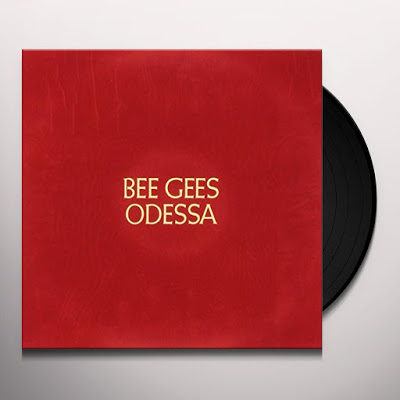 Throughout their career, there was always talk of the “new” Beatles, whether a band that sounded like them or would take over the reigns. Some bands like the Dave Clark Five took that British invasion sound and ran with it, often being confused with the Fab Four. The Dave Clark Five actually dethroned the Beatles “I Want To Hold Your Hand” from the top spot with their hit, “Glad All Over.” Other hits of the DC5 include “Because,” the rockin’ “Do You Love Me” and “Catch Us If You Can.” But despite their popularity, they were not the next Beatles. Indeed the next Beatles was a thing throughout the sixties and into the 70s, indeed, bands like Badfinger and Klaatu we’re often mistaken for the Beatles. And in the 80s you couldn’t get more Beatle-sequel than Tears for Fears “The Seeds of Love” and artists like the Smashing Pumpkins. Today, Andrew McMahon and Death Cab For Cutie have an obvious Beatles influence. Death Cab’s name even comes from a song sung in a strip club in the Magical Mystery Tour film.
Throughout their career, there was always talk of the “new” Beatles, whether a band that sounded like them or would take over the reigns. Some bands like the Dave Clark Five took that British invasion sound and ran with it, often being confused with the Fab Four. The Dave Clark Five actually dethroned the Beatles “I Want To Hold Your Hand” from the top spot with their hit, “Glad All Over.” Other hits of the DC5 include “Because,” the rockin’ “Do You Love Me” and “Catch Us If You Can.” But despite their popularity, they were not the next Beatles. Indeed the next Beatles was a thing throughout the sixties and into the 70s, indeed, bands like Badfinger and Klaatu we’re often mistaken for the Beatles. And in the 80s you couldn’t get more Beatle-sequel than Tears for Fears “The Seeds of Love” and artists like the Smashing Pumpkins. Today, Andrew McMahon and Death Cab For Cutie have an obvious Beatles influence. Death Cab’s name even comes from a song sung in a strip club in the Magical Mystery Tour film.Of course, today, when we think of the Bee Gees, we think of “Stayin’ Alive” and “How Deep is Your Love,” the disco-centric Giorgio Moroder Bee Gees and not the ones who often could be confused for the Beatles.
The Bee Gees First came out in 1966 but was actually their third LP, the first two only released in Australia and New Zealand. The Bee Gees First had one of my all-time favorites, “Holiday” as well as “To Love Somebody.” it’s an LP that is often overlooked and shouldn’t be. On Horizontal, they folded up with Massachusetts and, recorded, during those sessions, the worldwide smash, “Words.” Idea would likewise have two stellar hits in “I’ve Gotta Get a Message to You” and “I Started a Joke.” By 1969, 50 years ago, the Bee Gees' popularity gave them the opportunity, like the Beatles, to flex their muscle in the studio.
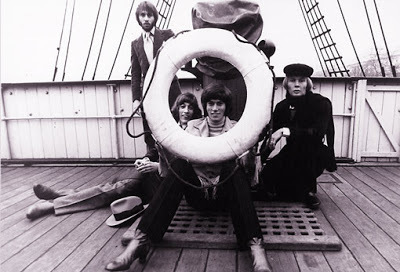 Sgt. Pepper had ushered in the new rock era in which concepts and album-oriented rock would give record labels the confidence to allow The Bee Gees free range with their lavish concept LP, Odessa, as over the top it is, conceptually, orchestrally and even visually. The LP came wrapped in a red velvet gatefold with gold lettering. The lavish artwork was abandoned halfway through initial production because of the allergic reaction it was causing at the printing plant. Today, in mint condition, it’s a rare collectible. Pick one up if you can. While a fun conceptual excursion aboard a lost ship in the 19th century, the recording session would essentially bring an end to the original band, Robin Gibbs and guitarist Vince Melouney would quit the Bee Gees when the recording sessions ended. The LP has been reconsidered in modern times and is among those 1000 LPs to hear before you die.
Sgt. Pepper had ushered in the new rock era in which concepts and album-oriented rock would give record labels the confidence to allow The Bee Gees free range with their lavish concept LP, Odessa, as over the top it is, conceptually, orchestrally and even visually. The LP came wrapped in a red velvet gatefold with gold lettering. The lavish artwork was abandoned halfway through initial production because of the allergic reaction it was causing at the printing plant. Today, in mint condition, it’s a rare collectible. Pick one up if you can. While a fun conceptual excursion aboard a lost ship in the 19th century, the recording session would essentially bring an end to the original band, Robin Gibbs and guitarist Vince Melouney would quit the Bee Gees when the recording sessions ended. The LP has been reconsidered in modern times and is among those 1000 LPs to hear before you die.A newly revitalized Bee Gees would emerge a few years later and hits like “Run to Me,” “Lonely Days” and “How Can You Mend a Broken Heart” would serve as The Bee Gees round two. Round three, of course, would establish The Bee Gees as the guiding musical force of the disco era, with monster hits like “Stayin’ Alive,” “Nights on Broadway,” “Jive Talkin’” and “You Should Be Dancin’.” When all was said and done, The Bee Gees emerge as the most successful British Band behind the Beatles and Pink Floyd.
Published on October 14, 2019 05:06
October 13, 2019
45s
 Suffice it to say that I am satisfied with Spotify for the car, but it's the tactile sense that's missing with the virtual world. An album cover on my TV screen does not make up for holding Dark Side in my hands, for thumbing through the pages of Tommy or Magical Mystery Tour, and how, exactly, does today's digital music generation roll a joint without a gatefold LP? For the past couple of days, I've had an urge to hear the instrumental intro to Lou Reed's Rock 'n' Roll Animal (AM9). The remarkable guitar duet by Dick Wagner and Steve Hunter is a monster live performance but I've become such a vinyl snob these days that I want to pick up a copy and hear it the way it should be heard, and without the iconic album cover flipping from side to side on my TV screen and counting down the seconds till the next track.
Suffice it to say that I am satisfied with Spotify for the car, but it's the tactile sense that's missing with the virtual world. An album cover on my TV screen does not make up for holding Dark Side in my hands, for thumbing through the pages of Tommy or Magical Mystery Tour, and how, exactly, does today's digital music generation roll a joint without a gatefold LP? For the past couple of days, I've had an urge to hear the instrumental intro to Lou Reed's Rock 'n' Roll Animal (AM9). The remarkable guitar duet by Dick Wagner and Steve Hunter is a monster live performance but I've become such a vinyl snob these days that I want to pick up a copy and hear it the way it should be heard, and without the iconic album cover flipping from side to side on my TV screen and counting down the seconds till the next track. 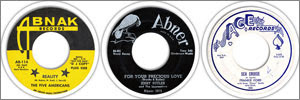 OK, I'm back. I took the plunge. I found Rock 'n' Roll Animal for $6.99 and I bought a pretty mint Ten Years After for a buck 99. Pretty good score. I also found a nice copy of "Pleasant Valley Sunday" on 45 with a photo sleeve; so I'm happy.
OK, I'm back. I took the plunge. I found Rock 'n' Roll Animal for $6.99 and I bought a pretty mint Ten Years After for a buck 99. Pretty good score. I also found a nice copy of "Pleasant Valley Sunday" on 45 with a photo sleeve; so I'm happy. 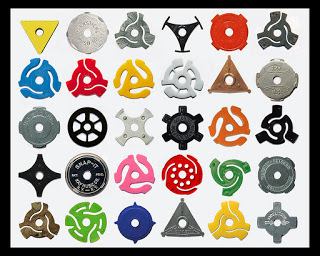 Interestingly, there are those who actually argue the superior sound quality of the 45, based on the increase of speed and the wider grooves. No one has ever persuaded me that the quality of a 45 is superior on any level, and I would maintain that the typical 45 lacks sorely in manufacture and quality control. That said, I am a collector. I adore my 45s. I love the look, the diversity of the labels, the size and format. I play them on an RCA 1953 bakelite 45 phonograph. It's vacuum tube-driven and if you don’t allow for it to warm up, you'll only hear the sound coming off the needle and not through the phonograph's speaker. Despite being fully restored, the motor's hum is audible, though not over the speaker. The quality of the sound is rich and heady, but quality here is subjective. There are perceptible clicks and hisses, and an empty, somewhat hollow sound that just, well, sounds authentic. I guess it's an acquired taste.
Interestingly, there are those who actually argue the superior sound quality of the 45, based on the increase of speed and the wider grooves. No one has ever persuaded me that the quality of a 45 is superior on any level, and I would maintain that the typical 45 lacks sorely in manufacture and quality control. That said, I am a collector. I adore my 45s. I love the look, the diversity of the labels, the size and format. I play them on an RCA 1953 bakelite 45 phonograph. It's vacuum tube-driven and if you don’t allow for it to warm up, you'll only hear the sound coming off the needle and not through the phonograph's speaker. Despite being fully restored, the motor's hum is audible, though not over the speaker. The quality of the sound is rich and heady, but quality here is subjective. There are perceptible clicks and hisses, and an empty, somewhat hollow sound that just, well, sounds authentic. I guess it's an acquired taste. Here's the deal. I collect 45s for the thrill of collecting based on my interest in the era (I confine my collection to the 60s and early 70s), the unique format, the bang for the buck (45s are notably inexpensive), and the aesthetics. I appreciate the Snap, Crackle, Pop of the format, the wow, the hiss, and the nostalgia. I doubt that I will ever take my mint version of 10cc's "I'm Not in Love" and play it on a $600 Shinola turntable. If I did, I have my doubts that the experience would exceed the digital sonic landscape created by the LP, let alone my SACD of The Original Soundtrack.
Here's the deal. I collect 45s for the thrill of collecting based on my interest in the era (I confine my collection to the 60s and early 70s), the unique format, the bang for the buck (45s are notably inexpensive), and the aesthetics. I appreciate the Snap, Crackle, Pop of the format, the wow, the hiss, and the nostalgia. I doubt that I will ever take my mint version of 10cc's "I'm Not in Love" and play it on a $600 Shinola turntable. If I did, I have my doubts that the experience would exceed the digital sonic landscape created by the LP, let alone my SACD of The Original Soundtrack. The 45 and LP were developed based on the rivalry between Columbia Records and RCA Victor to replace the 78 rpm format created early in the century. Made of brittle and noisy shellac — a compound consisting of secretions from Southeast-Asian beetles — the 78 rpm format was ripe for replacement by the late 1940s. (The term "album" originated with the photo-like albums manufactured for multi-record 78 rpm releases.) In 1948, Columbia unveiled the 33-1/3 rpm, 12-inch record made of "Vinylite" (vinyl) that was quieter and less prone to breakage than shellac. The new format was perfect for reproducing long musical performances, and even though no "album" was required to contain them, single LPs (Columbia copyrighted the term "LP" for Long Player) retained the moniker and is utilized even in today's digital world.
 Not content to use Columbia's format for its huge back catalog, RCA released its own 7-inch, 45 rpm format in 1949. Originally, RCA's strategy was to tout its new format's superiority over Columbia's LP, viewing it as a replacement, for rather than a complement to, the 33-1/3 rpm record. (The "45" rpm concept was established by subtracting "33" from "78.") RCA began to manufacture inexpensive 45 RPM players featuring a spindle that could hold many 45s, dropping each to the turntable for play as soon as the previous was finished. Part of RCA's thinking was that the 45's sound reproduction was superior to the LP, and part was its unwillingness to cede the long-playing music market to Columbia, even though Columbia was willing to license its manufacturing process to any record company. (Columbia did not make music playback equipment.) Both companies felt they had the upper hand; both concepts would become industry standards.
Not content to use Columbia's format for its huge back catalog, RCA released its own 7-inch, 45 rpm format in 1949. Originally, RCA's strategy was to tout its new format's superiority over Columbia's LP, viewing it as a replacement, for rather than a complement to, the 33-1/3 rpm record. (The "45" rpm concept was established by subtracting "33" from "78.") RCA began to manufacture inexpensive 45 RPM players featuring a spindle that could hold many 45s, dropping each to the turntable for play as soon as the previous was finished. Part of RCA's thinking was that the 45's sound reproduction was superior to the LP, and part was its unwillingness to cede the long-playing music market to Columbia, even though Columbia was willing to license its manufacturing process to any record company. (Columbia did not make music playback equipment.) Both companies felt they had the upper hand; both concepts would become industry standards.By the early 1950s, playback equipment for consumers quickly adopted modifications for playing all three formats (not to mention an unused format for spoken word recordings, 16rpm). The 78 format persisted well into the 1960s, but its fate was sealed by the sheer superiority of the new 45 and 33-1/3 rpm records. For a while, RCA tried to position the 45 as the 33-1/3 rpm LP's equal by releasing box sets of 45s intended for use on their "spindle" player system, but by the end of the decade, even RCA had adopted the LP helping to bring it to the Pop audience by releasing LPs for Elvis Presley and other big-name artists.
While there was a plethora of corporate labels releasing LPs, names like Victor, Columbia, Capitol, Decca and Mercury, the manufacturing process was expensive and left rather exclusively to the big five in the U.S. Smaller subsidiary labels began to appear and in the heyday of rock there were dozens of iconic labels, many started by bands and distributed by larger conglomerates: Brother Records (Beach Boys), Swan Song (Zeppelin), Manticore, Harvest, Virgin, Asylum, to name a few. 45s, though, would find hundreds, if not thousands of manufacturers, tiny labels made in someone's garage and distributed locally or to radio stations. That phenomenon created one of 45 collecting's most interesting idiosyncrasies: many collectors are in it only for the labels. Names like Del-fi, Kama Sutra, Stateside, Ever-Soul, Fairmont, End, Parrot and Dooto exemplify the phenomenon.
While the LP would go on to establish the age of the concept (Sinatra's Wee Small Hours of the Morning) and the auteur (The Beatles, particularly with the release in 1966 of Rubber Soul), creating a format in which the artist was challenged to create a full 40 minutes of quality music, 45s sustained the hit format that began in the days of the American Standard. Collecting 45s is an incredible resource for the music enthusiasts. While I disagree that the 45's sound quality exceeds that of the LP (and in no way approaches that of hi-def formats), nowhere will one find a more exceptional historical artifact.
Published on October 13, 2019 12:56
October 9, 2019
Ummagumma - A Lesson in Floyd
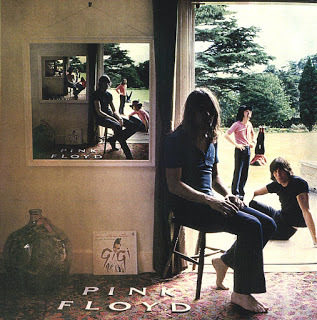 Ummagumma is that turning point between Syd's Pink Floyd (Piper and Saucerful) and Meddle. In a band like Yes, there is that iteration, from The Yes Album through Going For the One, that stands as the group's canon, with none of the rest of it really Yes. For Pink Floyd, though, there were two ensembles that co-exist: the Syd Barret years and beyond.Even with David Gilmour, the band that began as The Pink Floyd Sound had no real direction after Syd was whisked away to Wonderland. They'd made film scores for More and Zabriskie Point, which they shared equally with odd bedfellows The Grateful Dead, though unlike The Dead, the soundtracks showed Pink Floyd floundering. Nonetheless, the PF track “The Violent Sequence,” would later become “Us and Them” on Dark Side of the Moon.
Ummagumma is that turning point between Syd's Pink Floyd (Piper and Saucerful) and Meddle. In a band like Yes, there is that iteration, from The Yes Album through Going For the One, that stands as the group's canon, with none of the rest of it really Yes. For Pink Floyd, though, there were two ensembles that co-exist: the Syd Barret years and beyond.Even with David Gilmour, the band that began as The Pink Floyd Sound had no real direction after Syd was whisked away to Wonderland. They'd made film scores for More and Zabriskie Point, which they shared equally with odd bedfellows The Grateful Dead, though unlike The Dead, the soundtracks showed Pink Floyd floundering. Nonetheless, the PF track “The Violent Sequence,” would later become “Us and Them” on Dark Side of the Moon.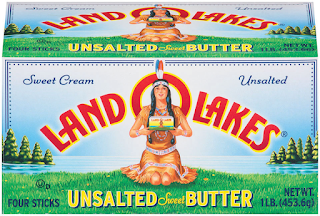 Ummagumma was released during that period as the first Harvest label LP. The album falls neatly into two parts: record one, a live recording (The Mother Club, Birmingham, 1969), and record two, a studio effort with half an album-side devoted to each of the four members. The live tracks are reworkings of the core material of the first two LPs in a bluesy style, interspersed with spaced-out movements that suggest what was coming next. "Set the Controls for the Heart of the Sun" and "A Saucerful of Secrets" are the definitive versions of these early year songs. And, of course, there's the haunting "Careful With That Axe, Eugene."
Ummagumma was released during that period as the first Harvest label LP. The album falls neatly into two parts: record one, a live recording (The Mother Club, Birmingham, 1969), and record two, a studio effort with half an album-side devoted to each of the four members. The live tracks are reworkings of the core material of the first two LPs in a bluesy style, interspersed with spaced-out movements that suggest what was coming next. "Set the Controls for the Heart of the Sun" and "A Saucerful of Secrets" are the definitive versions of these early year songs. And, of course, there's the haunting "Careful With That Axe, Eugene."The solo efforts are Richard Wright's "Sysyphus " (sic), a puzzling keyboard workout charting the Sisyphus myth replete with falling rock in an avant-garde tone poem.Roger Waters' "Several Species of Small Furry Animals Gathering Together and Grooving With a Pict" is an experimental spaced-out drug experience, I guess; at any rate, it's just what the title promises and my fave on the LP. "Grantchester Meadows" is little more than Waters sitting in a wheat field strumming an acoustic guitar, getting high. Fair enough.
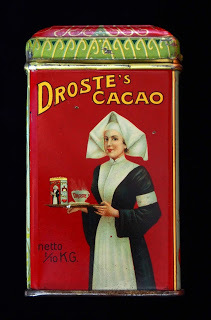 David Gilmour's "The Narrow Way" is the closest the studio disk comes to a standard bluesy Floyd song, and Nick Mason's "Grand Vizier" is a mixture of flutes and odd percussion that ends in a seven-minute drum solo. It is the lease inpsired track on the LP.
David Gilmour's "The Narrow Way" is the closest the studio disk comes to a standard bluesy Floyd song, and Nick Mason's "Grand Vizier" is a mixture of flutes and odd percussion that ends in a seven-minute drum solo. It is the lease inpsired track on the LP.The cover art by Hipgnosis is the last depiction of the band on an LP cover and is done utilizing the Droste Effect, kind of like when a mirror is reflected in a mirror, an illusion named for the Droste cocoa can. The other famous branding that utilizes the Droste Effect is Land O Lakes. What's different on Ummagumma is that the band members change positions with each iteration. The original cover is depicted below with the Broadway musical soundtrack, Gigi, leaning against the wall. This was airbrushed out for copyright infringement on later versions of the LP, only to return with the reissue.
Ummagumma is a lesson in Floyd, a survey of where they'd been and where they were
going.
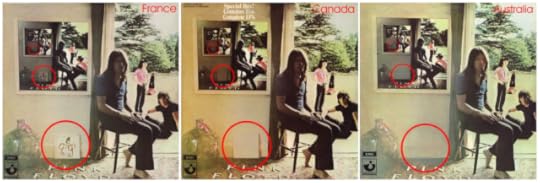
Published on October 09, 2019 06:55
The Pink Floyd Sound
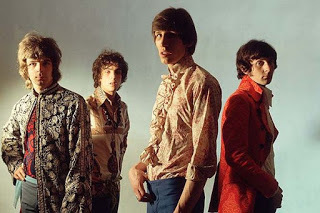 Take notes. In the fall of 1965, fledgling musicians Roger Waters (guitar), Richard Wright (keyboards) and Nick Mason (drums), students at the Regent Street Polytechnic in Westminster (London), formed the band Sigma 6. Finding little success, the band changed its name to The Tea Sets, yet again renaming themselves The Abdabs before the end of the year. Not done.With new members Clive Metcalf (bass), Keith Nobles and Juliette Gale (backing vocals), the band tried on for size The Screaming Abdads and The Architectural Abdabs. In 1966, The Abdabs broke up. Not a year would pass since the first carnation when the band once again became Sigma 6. Waters switched to bass guitar and recruited two new guitar players; Bob Klose and Roger Syd Barrett. Klose’s involvement was minimal and before the end of the year, the band had gained a dab of notoriety as The Meggadeaths. There are some accounts of Klose, spelled with a C instead, remaining in the band even after Barrett coined the moniker The Pink Floyd Sound, a contraction of the names of two American bluesmen, Pink Anderson and Floyd Council; and before or after The Meggadeaths there were Leonard's Lodgers and The Spectrum 5, and then The Abdabs once again. Got it?
Take notes. In the fall of 1965, fledgling musicians Roger Waters (guitar), Richard Wright (keyboards) and Nick Mason (drums), students at the Regent Street Polytechnic in Westminster (London), formed the band Sigma 6. Finding little success, the band changed its name to The Tea Sets, yet again renaming themselves The Abdabs before the end of the year. Not done.With new members Clive Metcalf (bass), Keith Nobles and Juliette Gale (backing vocals), the band tried on for size The Screaming Abdads and The Architectural Abdabs. In 1966, The Abdabs broke up. Not a year would pass since the first carnation when the band once again became Sigma 6. Waters switched to bass guitar and recruited two new guitar players; Bob Klose and Roger Syd Barrett. Klose’s involvement was minimal and before the end of the year, the band had gained a dab of notoriety as The Meggadeaths. There are some accounts of Klose, spelled with a C instead, remaining in the band even after Barrett coined the moniker The Pink Floyd Sound, a contraction of the names of two American bluesmen, Pink Anderson and Floyd Council; and before or after The Meggadeaths there were Leonard's Lodgers and The Spectrum 5, and then The Abdabs once again. Got it?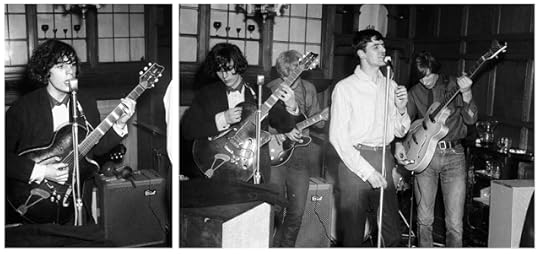 The Tea Sets: Syd Barrett, Bob Klose, Chris Dennis and Roger Waters
The Tea Sets: Syd Barrett, Bob Klose, Chris Dennis and Roger Waters
A little more than a year later, Pink Floyd (losing the The and the Sound), found themselves at EMI (Abbey Road) Studios recording "Arnold Layne," a song about a crazy transvestite who steals women's clothes. That same year, with Barrett at the helm and after several successful 45s, including the smash, "See Emily Play," Pink Floyd recorded The Piper At The Gates of Dawn down the hall at Abbey Road from where The Beatles were recording Sgt. Pepper. Makes it sound easy, dunnit? Convoluted, but easy. (Imagine that, btw, Piper and Sgt. Pepper recorded in the same place at the same time - surreal.)
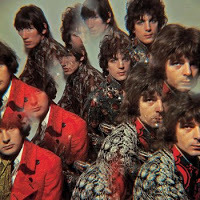 Piper at the Gates of DawnWith the making of Piper, Pink Floyd first discovered LSD. It was said that the amount of acid Pink Floyd took in this period could obliterate (it’s a 60s LSD term) the population of a small country (like England). It was based on this that Barrett, the most prolific user, may have had his metal breakdown due the amount of drugs or his clinical depression or schizophrenia, and he was replaced (read that as fired) by a friend from Cambridge, Dave Gilmour. Nick Mason described Syd at the time as "completely distanced from everything going on." Pink Floyd's next album, A Saucer Full of Secrets, was a mix of both Barrett's and Gilmour's work, but it was not nearly as successful as Piper. There were those who saw the rise of The Pink Floyd Sound, and the extravaganzas associated with their concerts, as fire by gasoline, a flash in a pan. For clarity's sake, Pink Floyd did indeed contain five members, including Barrett, from January 12th to the 20th (1967), and within that timeframe Pink Floyd recorded their only track as a five-piece, with both Gilmour and Barrett on guitar.
Piper at the Gates of DawnWith the making of Piper, Pink Floyd first discovered LSD. It was said that the amount of acid Pink Floyd took in this period could obliterate (it’s a 60s LSD term) the population of a small country (like England). It was based on this that Barrett, the most prolific user, may have had his metal breakdown due the amount of drugs or his clinical depression or schizophrenia, and he was replaced (read that as fired) by a friend from Cambridge, Dave Gilmour. Nick Mason described Syd at the time as "completely distanced from everything going on." Pink Floyd's next album, A Saucer Full of Secrets, was a mix of both Barrett's and Gilmour's work, but it was not nearly as successful as Piper. There were those who saw the rise of The Pink Floyd Sound, and the extravaganzas associated with their concerts, as fire by gasoline, a flash in a pan. For clarity's sake, Pink Floyd did indeed contain five members, including Barrett, from January 12th to the 20th (1967), and within that timeframe Pink Floyd recorded their only track as a five-piece, with both Gilmour and Barrett on guitar. On the BBC's Look of the Week broadcast of May 14, 1967, Pink Floyd played "Astronomy Domine" before Waters and Barrett sat down for a rather tense interview with classically trained musician and critic Hans Keller. It's interesting to watch Keller's face as he expresses his extreme irritation at the band’s loud, strange music. "My verdict is that its a little bit of a regression to childhood," he says with a grimace. "But after all, why not?" It would prove Barrett's last appearance as a member of the band.
On the BBC's Look of the Week broadcast of May 14, 1967, Pink Floyd played "Astronomy Domine" before Waters and Barrett sat down for a rather tense interview with classically trained musician and critic Hans Keller. It's interesting to watch Keller's face as he expresses his extreme irritation at the band’s loud, strange music. "My verdict is that its a little bit of a regression to childhood," he says with a grimace. "But after all, why not?" It would prove Barrett's last appearance as a member of the band.Paul McCartney, who the band met while recording Piper, was the only Londoner of The Beatles at the time, and still single. Sundays you could find him at the UFO (The "You-fo") where Pink Floyd were essentially the house band. Once again a foursome, Pink Floyd would stumble into the 70s without a clear idea of who they were and without an inkling of who they would become. Ummagumma, north country slang for getting one's groove on, and More would attempt to normalize the PF ideology, and in these LPs, if one listens intently, can indeed be heard the genesis of the biggest band of all time.
Published on October 09, 2019 05:35
Pink Floyd Filmscores - Ummagumma - 1969

There's an odd gap between A Saucerful of Secrets and what most would consider Pink Floyd's next legit LP, Atom Heart Mother (and even that fits poorly into the Pink Floyd Canon). During this period, Pink Floyd ventured into the obscure world of film soundtracks and filmscores (soundtracks being songs that serve to underscore a film, and filmscores as incidental music; think American Grafitti - 50s and 60s radio hits that accurately depict 1962 - vs. Star Wars).
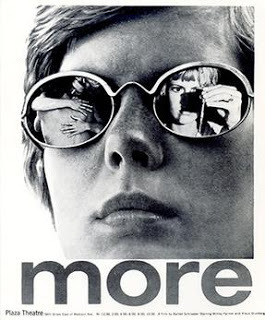 Following Saucerful, Pink Floyd provided a 15-minute score for The Committee. The original recording of "The Committee, Part One" was recorded then reversed for use in the soundtrack. The remaining tracks consist of random noises, voiceovers and several instrumental smatterings. Life is short, so skip this one if you don't have a lot of time on your hands.
Following Saucerful, Pink Floyd provided a 15-minute score for The Committee. The original recording of "The Committee, Part One" was recorded then reversed for use in the soundtrack. The remaining tracks consist of random noises, voiceovers and several instrumental smatterings. Life is short, so skip this one if you don't have a lot of time on your hands.A legitimate filmscore came next with the release of Barbet Schroeder's More in 1969. Considered the third Floyd studio album, More was more about foreshadowing what was yet to come. Barbet Schroeder didn't want the film to have a score, so to speak, and opted for a soundtrack approach in which music is a part of everyday life; there's always a radio on or someone singing or a TV spot. While technically a Floyd LP, there are few who include the work in their repertoire. More has its moments, though, with hints of Meddle and Dark Side in addition to Floyd with its hardest edge in songs like "The Nile Song" and "Ibiza Beach." Interestingly, the vocals are exclusively Gilmour's with Waters playing no role (the only LP in which this occurs). The filmscore received universally negative reviews.
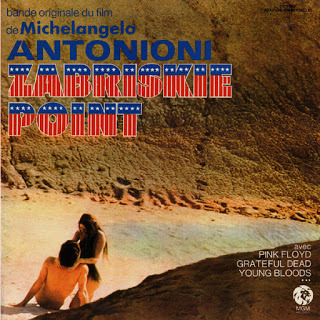 Next in the series was Pink Floyd's contribution to Michelangelo Antonioni's Zabriskie Point, which they shared nearly equally with odd-bedfellow The Grateful Dead. While Ummagumma was released prior to this soundtrack, that LP's odd mix of live Floyd and solo efforts keeps it from fitting the canon proper. Zabriskie Point included a reworking of Ummagumma's "Careful With that Axe, Eugene" called "Come in No. 51, Your Time is Up," the opening track, Heart Beat Pig Meat, a ballad known as "Country Song" and several instrumentals. Most interesting is the track known as "The Violent Sequence" which was cut from the film. The track would later be reworked and appear on Dark Side as "Us and Them."
Next in the series was Pink Floyd's contribution to Michelangelo Antonioni's Zabriskie Point, which they shared nearly equally with odd-bedfellow The Grateful Dead. While Ummagumma was released prior to this soundtrack, that LP's odd mix of live Floyd and solo efforts keeps it from fitting the canon proper. Zabriskie Point included a reworking of Ummagumma's "Careful With that Axe, Eugene" called "Come in No. 51, Your Time is Up," the opening track, Heart Beat Pig Meat, a ballad known as "Country Song" and several instrumentals. Most interesting is the track known as "The Violent Sequence" which was cut from the film. The track would later be reworked and appear on Dark Side as "Us and Them."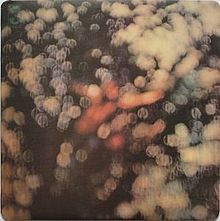 These three projects and Ummagumma fit peculiarly between Saucerful and Atom Heart Mother. Out of context, it would seem that after Syd, Pink Floyd had a bit too much avant-garde and too little focus, yet when one analyses the soundtrack work, it's clear how the Pink Floyd sound was honed for its pinnacle years from Meddle through The Wall.
These three projects and Ummagumma fit peculiarly between Saucerful and Atom Heart Mother. Out of context, it would seem that after Syd, Pink Floyd had a bit too much avant-garde and too little focus, yet when one analyses the soundtrack work, it's clear how the Pink Floyd sound was honed for its pinnacle years from Meddle through The Wall.One final soundtrack/filmscore would come in 1972 with another Barbet Schroeder film, La Vallee (Obscured By Clouds). Recorded while the band was already working on Dark Side, the behemoth greatest-album-ever status and the success of Meddle overshadowed its release to the point of obscurity, and that's absurd. This is a curiously underrated release, that while far from the Dark Side, is well worth more than a casual listen, and reamins the hidden gem of Pink Floyd's discography.
Published on October 09, 2019 05:34



